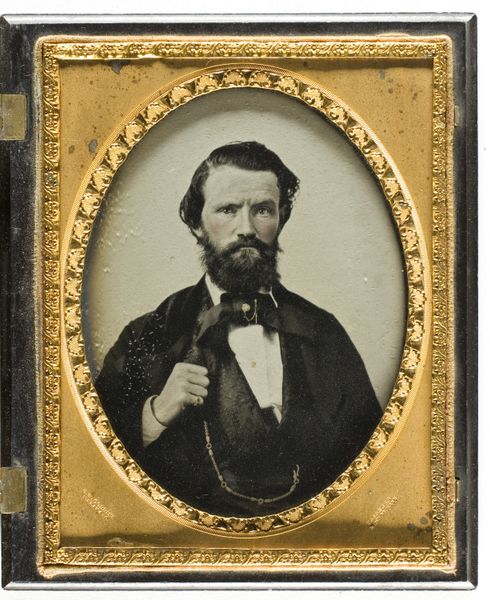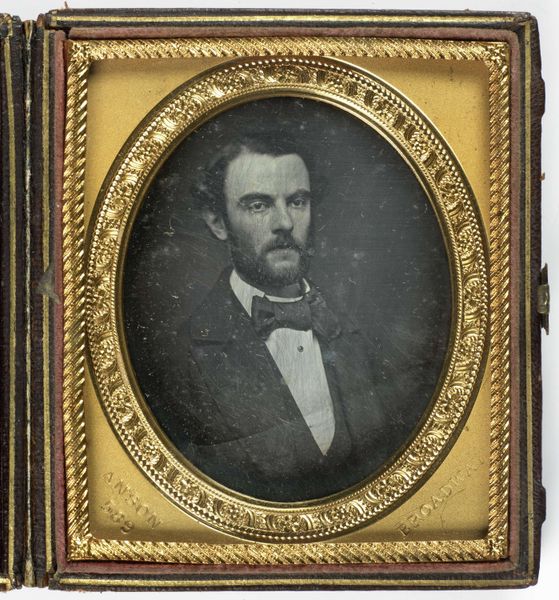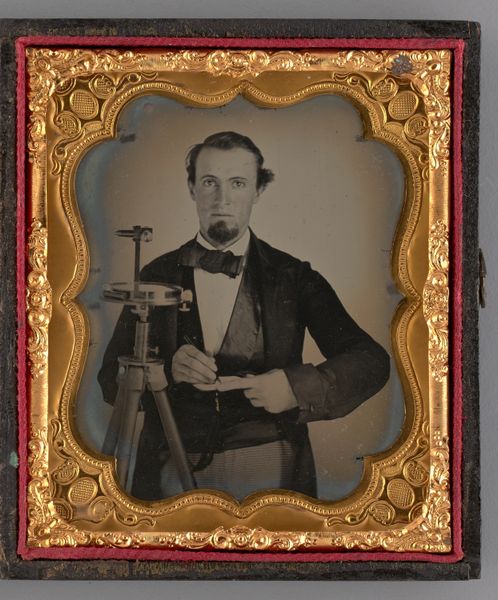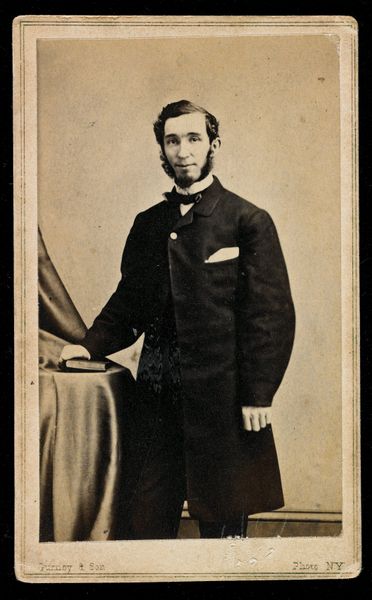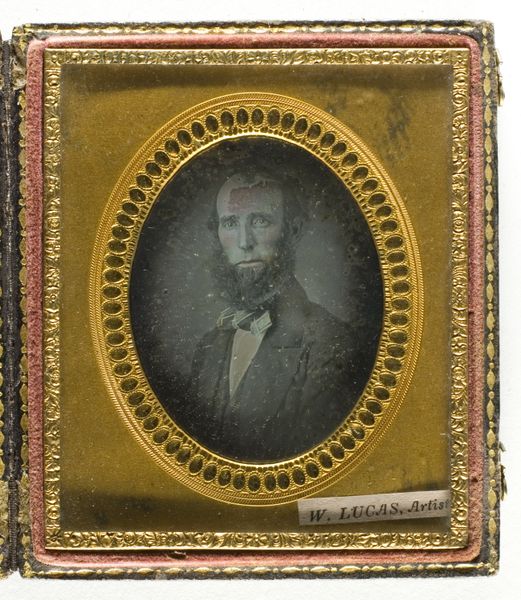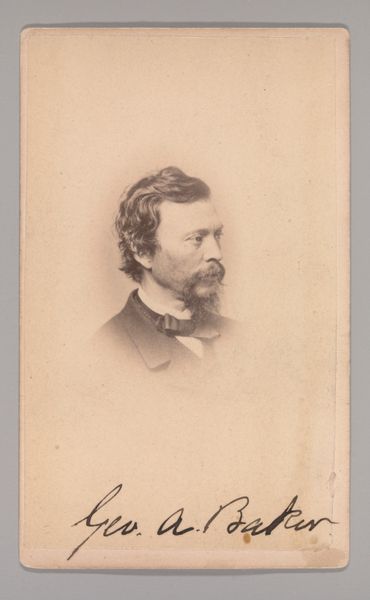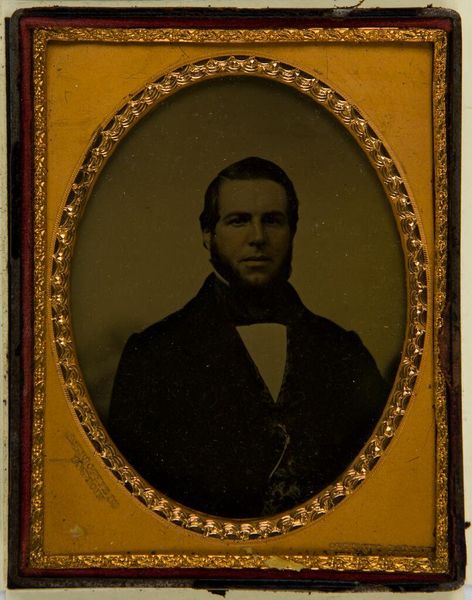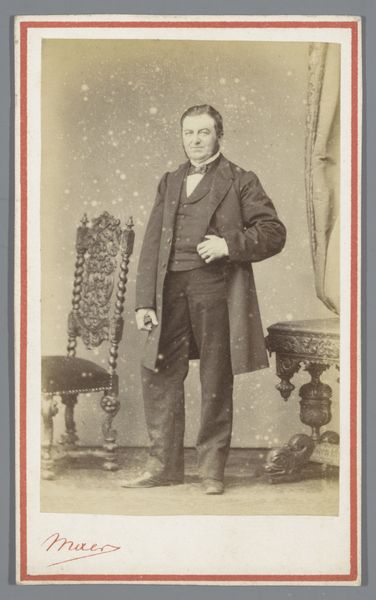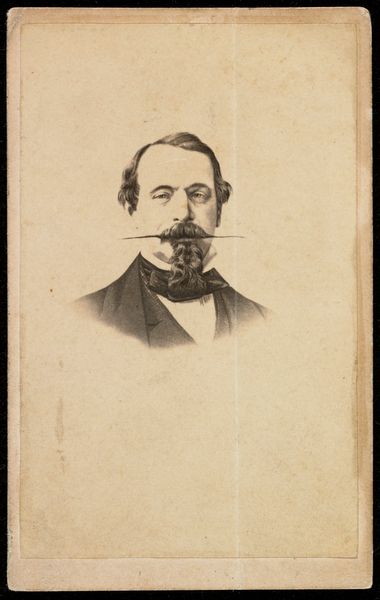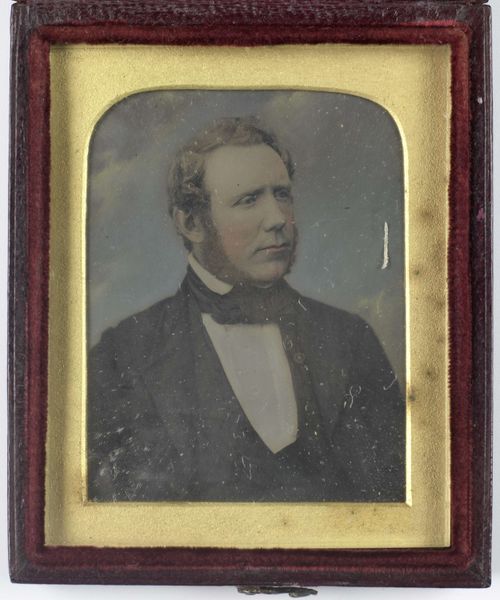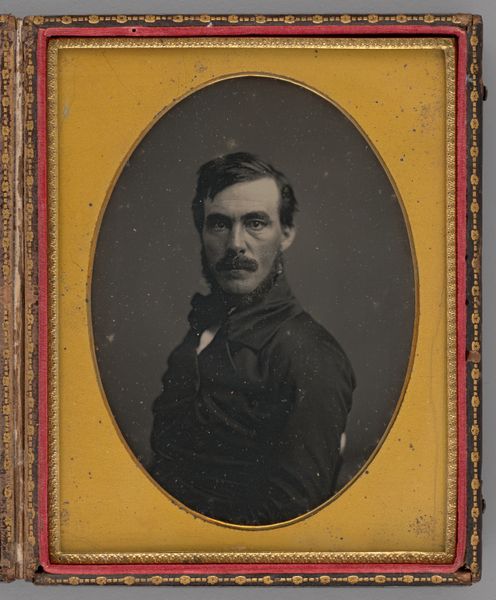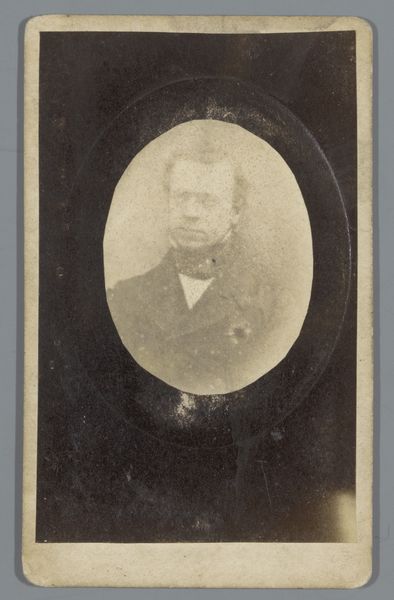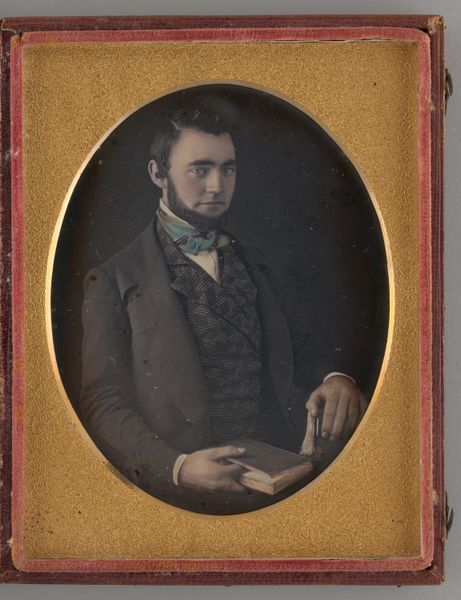
Abraham Lincoln, from the series Great Americans (N76) for Duke brand cigarettes 1888
0:00
0:00
Dimensions: Sheet: 2 3/4 × 1 1/2 in. (7 × 3.8 cm)
Copyright: Public Domain
Editor: Here we have "Abraham Lincoln, from the series Great Americans (N76) for Duke brand cigarettes," a print from 1888 by W. Duke, Sons & Co., currently housed at the Metropolitan Museum of Art. I’m struck by the chains at the bottom—their symbolism feels really heavy in contrast to what is essentially an advertisement. What are your thoughts on this piece? Curator: The chains are indeed central. What emotions do those broken chains, combined with the "Emancipation" scroll, evoke in you, and how do they function alongside the portrait itself and, of course, the advertisement for cigarettes? The visual language presents Lincoln not just as a man, but as a symbol of liberation. This resonates with cultural memory, connecting the viewer to a specific narrative of American history. The chains represent a former state of being—a societal ill—while the portrait asserts progress. Editor: It feels almost contradictory to have this really profound symbolism paired with an advertisement for cigarettes. Is there something about how the commercial aspect changes our reading of those symbols? Curator: Precisely! It forces us to question the intent. Consider the appropriation of such powerful imagery to sell a product. Cigarettes offered a different sort of liberation at the time – from social constraints, perhaps. The company uses Lincoln and his message to add weight and value, like branding something with “authenticity." Editor: So the portrait is sort of recontextualized, filtered through a commercial lens to evoke trustworthiness and appeal? Curator: Exactly. This tension—the sacred versus the profane, the historical figure and commercial branding—is what makes this seemingly simple piece so complex and engaging. The layered symbols invite critical examination of historical narrative, and marketing. Editor: I see it differently now. It makes me wonder how the meaning of the image might have evolved, even eroded, over time.
Comments
No comments
Be the first to comment and join the conversation on the ultimate creative platform.
